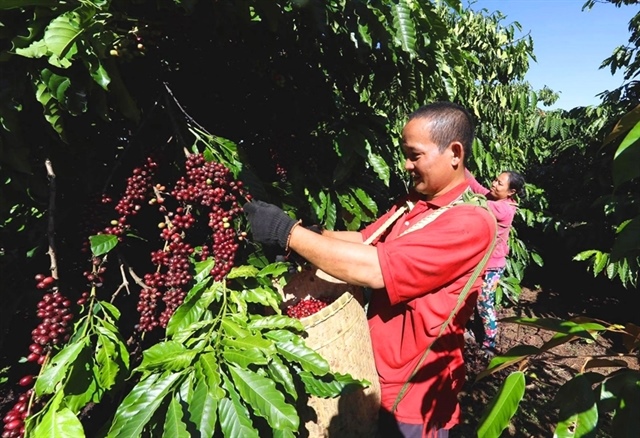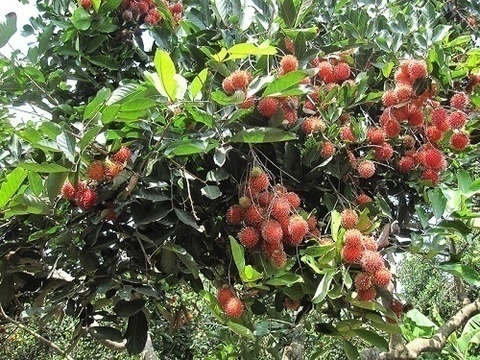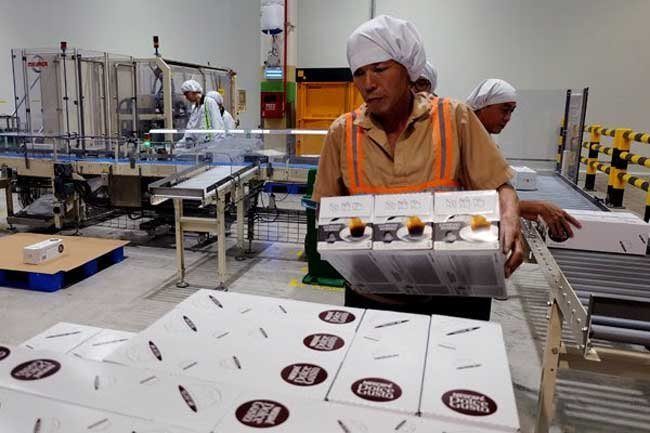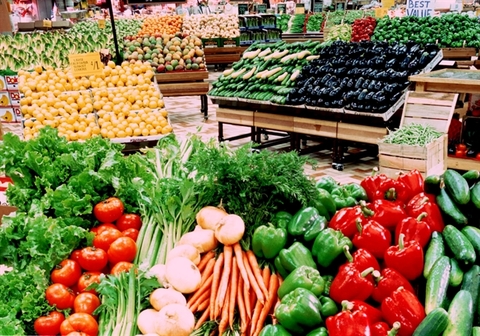Organic produce chains struggle to maintain Vietnam foothold
Organic produce chains struggle to maintain Vietnam foothold
Stiff competition, storage issues and low profit margins make it very difficult to run an organic store chain in Vietnam.
In Hanoi’s Dong Da District, a loudspeaker shop has newly opened in Luong Dinh Cua Street, replacing an organic food store that has quietly downed shutters just a few months after it began doing business.
Despite growing health awareness and popularity of organic good, "premature closures" are not uncommon in Vietnam’s organic food market. At the start of this year, Hoasuafoods, a well-known organic food chain in Ho Chi Minh City, shut down all its stores.
Although individual organic food stores have been sprouting in densely populated areas of cities like Hanoi and HCMC in the last few years, only businesses with strong financial resources such as Soi Bien, a seafood retailer with 39 stores nationwide, and Bac Tom, a groceries shop chain with 21 stores, have been able to maintain a large number of organic food outlets.
Other brands, such as Cleverfood, Tam Dat Huu Co, Da Lat GAP, and Ofarm, have not expanded past 10 outlets, while the rest are small-scale, family run businesses.
Tran Manh Chien, owner and founder of Bac Tom, told VnExpress that his chain operates based on the franchise model. This is why the company reports low revenue but has a large number of stores, he added.
On average, the turnover from a franchisee store averages VND200 million ($8,534) per month, but could be as high as VND900 million ($38,396) for large stores in good locations. The franchise is growing steadily, but there have been many franchisees having to close down because competition in the industry is fierce, Chien said.
"It looks easy, but you have to start working in the industry to understand how hard it is to run an organic food business," said Thanh, a former franchisee of the Bac Tom brand.
When Thanh first started, Bac Tom only had around 10 shops, but after three months, the number of franchisees increased to 25. Not only did her shop have to compete with traditional merchants and other fresh food chains, but sometimes, also with other franchisees, Thanh said.
The most difficult aspect of running an organic food store is calculating the exact amount of food to order, in order to minimize inventory and expiry. Many times, if goods are not given to customers for free, they have to be trashed, Thanh added.
"After half a year, I closed the shop. Several of my friends who ran organic food stores soon followed suit," Thanh said.
Bac Tom founder Tran Manh Tien also admitted that there was a period of time when he continuously opened and closed stores. The franchise began operating stably with 20 stores, so Tien has no plans to expand soon, he said.
According to Nguyen Khanh Trinh, director of Soi Bien, the profit margin of the industry is not attractive.
"When you open a coffee chain, a cup of tea costs only VND3,000 (13 cents) but can sell for as much as VND50,000 ($2.13). For organic food, you lose a lot of money because products with short consumption periods expire and cannot be sold," he said.
According to industry insiders, the gross margin for organic foods is only around 28 percent, which means it is easy to make losses if a shop owner manages inventory poorly, Trinh said.
Organic chains also face competition from major corporations such as Vingroup and Mobile World investing heavily into mini-mart chains such as Vinmart+ and Bach Hoa Xanh, which do not directly compete with organic stores in their niche market but targets the same consumers.
As a result, maintaining an organic store is no easy task, Trinh emphad.
According to a 2018 report by the Ministry of Industry and Trade, organic agriculture is a growing trend in Vietnam and around the world. As of last year, 33 out of 63 provinces and cities in Vietnam have adopted the practice with an area of 76,600 hectares, an increase of 3.6 times over to 2010.
The report estimates that around 60 businesses and corporations have invested in the sector, but does not mention total estimated revenue and other similar details.





















